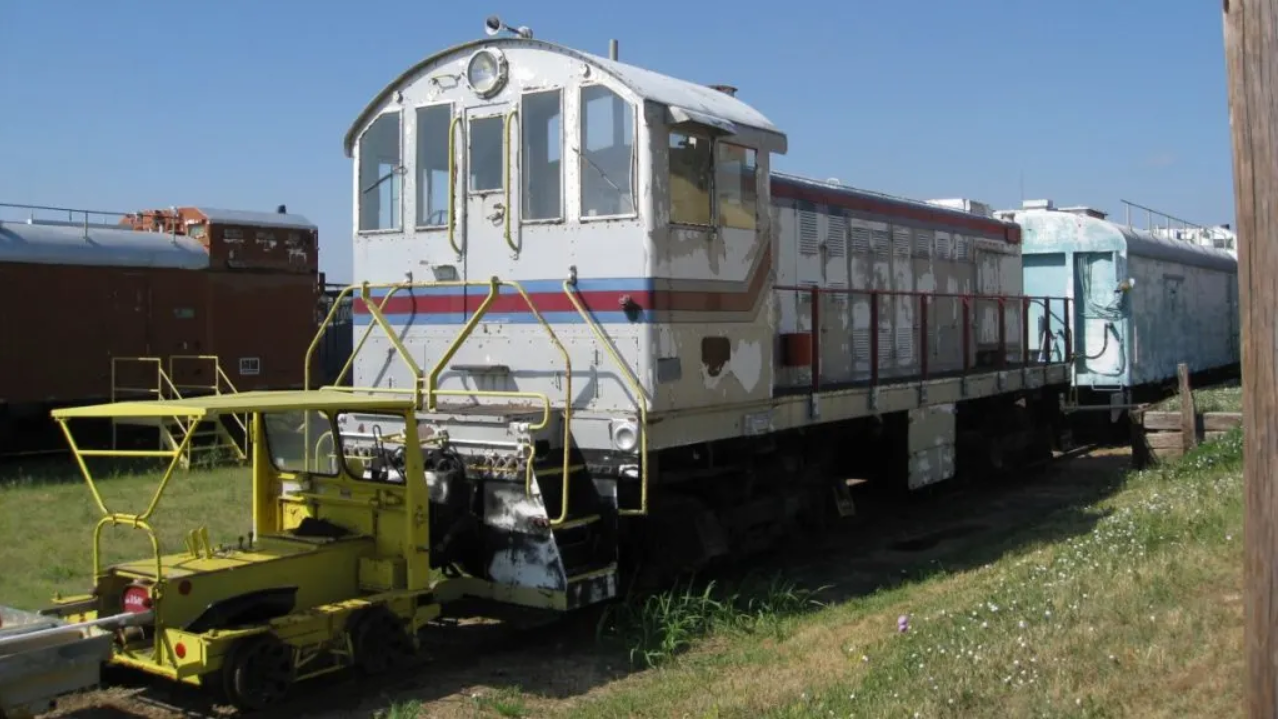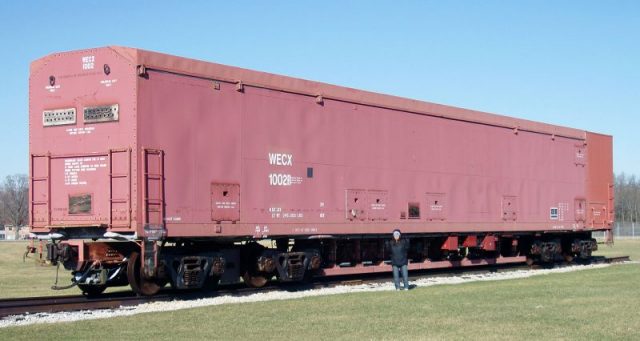After World War II ended in 1945, the world was worried about the possibility of the Soviet Union attacking with their nuclear missiles. The rest of the nations, including the United States, rushed to develop their own nuclear weapons during an era known as Cold War. Nuclear facilities were erected all over the country, with over 2.4 million acres of federal land allotted to nuclear weapons-related purposes and activities, overseen by the Department of Energy. These weapons were transported from its plant to other places through locomotives called White Trains.
White, Unlabeled Trains
The geopolitical tension started after Nazi Germany surrendered in May 1945. The United States and the Soviet Union had a “face-off” due to the US and British’s fear of permanent Soviet domination of Eastern Europe when their alliance started to fall apart. There was also a threat of nuclear attacks when the Soviet Union performed a test of their atomic bomb on August 29, 1949, codenamed as “First Lighting.” As a result of the two superpowers’ mistrust of each other, they spent the next few decades developing their own nuclear arsenals.

Today, the United States relies almost entirely on million-dollar Lockheed Martin tractor-trailers, known as Safeguard Transporters (SGTs) and Safe Secure Trailers (SSTs), to move nuclear material. But from the 1950s through the 1980s, safe transit was dependent on the so-called “white trains.” These were basically heavily-armored boxcars placed in between these “turret cars” protruding above in case of an attack. How it worked was that the Department of Energy (DOE) guards peer out through the skit windows of the turrets, ready to shoot in case they had to defend the train. These “safe, secure railcars” or SSRs ensured Congress in 1979 that they were highly resistant to attack, unauthorized entry, as well as in the event of a fire or serious accident.
As mentioned, these transport vehicles looked anything but sophisticated. They were slow at 35 miles per hour max. The seven-member crew boarded usually took the nuclear bombs from Texas to Bangor, where they delivered them at a submarine base on the banks of the Puget Sound or from Texas to Charleston, with a set of submarines also waiting for them.
Pantex Plant
The epicenter of these white trains was located 17 miles outside downtown Amarillo, Texas, in a complex array of buildings situated on 10,000 acres of land called Pantex Plant. Most of the nuclear trains ended up being here as this was where these weapons were assembled, a role that they still fulfill until now as one of the six production facilities in the National Nuclear Security Administration’s Nuclear Security Enterprise.
There, 100,000 citizens were employed to assemble and disassemble the nuclear bombs. As Washington Post wrote in 1982,
Inside Gravel Gertie bunkers designed to contain explosions and contamination, moonlighting farmers and silent young mechanics bolt together the warheads for Trident missiles and delicately dismantle older weapons.

Dangerous materials like uranium and plutonium were sent to Pantex, where these nuclear materials were attached to the explosives inside their heavily shielded cells. The workers wore blue overalls, thick gloves, and safety shoes with rubber slipcovers as they worked in pairs. Once the firing components, casings, triggers, and tails were added, the white trains would again transport the now fully-assembled weapons.
The Battle Against the White Trains
These white trains were supposed to be a top-secret project. However, people began to worry about the idea of nuclear war around the 1980s, and people began expressing their anxieties about the radioactive materials being moved around the country. Resistance groups like the Ground Zero Center for Nonviolent Action with which Catholic theologian Jim Douglass was affiliated. He purchased a home in Bangor Washington overlooking the Naval Submarine Base in 1981, and he and his wife noticed the same white train entering and exiting the place.
And so, they launched a campaign to fight these white trains, as Douglass described, “the most concentrated symbol we have of the hell of nuclear war.” They figured and mapped out the possible routes of the train from Amarillo to Washington and then contacted peace and religious groups whom he asked to watch for these trains, do a prayer vigil, as well as inform local newspapers about them. Activists went in front of the DOE building, carrying with them a mapped-out route of the white train, along with a huge banner saying, “The Nuclear Train Starts Here.”
Unknown to Douglas and his wife, many “Peace” and “disarmament” groups in the U.S. had been infiltrated by the Soviet Union which was using them to to put pressure on the U.S. to disarm even as these groups fed valuable intelligence to the Russians.
Tying To Resolve The Problem
The public attention that the white trains garnered posed a huge problem for the DOE— knowing the trains’ route meant there was now a threat that they could be hijacked. They attempted to solve this by rerouting the trains, but more and more people were becoming aware and vigilant of these white, unlabeled trains. They then passed regulations that would make it illegal to pass information about the trains’ railways, but that didn’t work either, so they tried repainting them with different colors.
The memorandum called “Color Change of Safe-Secure Railcars” noted, “the painting of these railcars will not stop dedicated protesters from identifying our special trains. However, it will make tracking our trains more difficult, and we believe, enhances the safety and security…” The trains became green or red or gray, sometimes blue. Anything but white. But who wouldn’t recognize these trains dotted with turrets for snipers?

CC BY-SA 3.0/The Vintage News)
In the end, the US government decided to ditch the not-white-anymore trains completely and began to use Safeguard Transporter trucks for moving the nuclear materials instead, without letting the public know, of course.










COMMENTS
You must become a subscriber or login to view or post comments on this article.